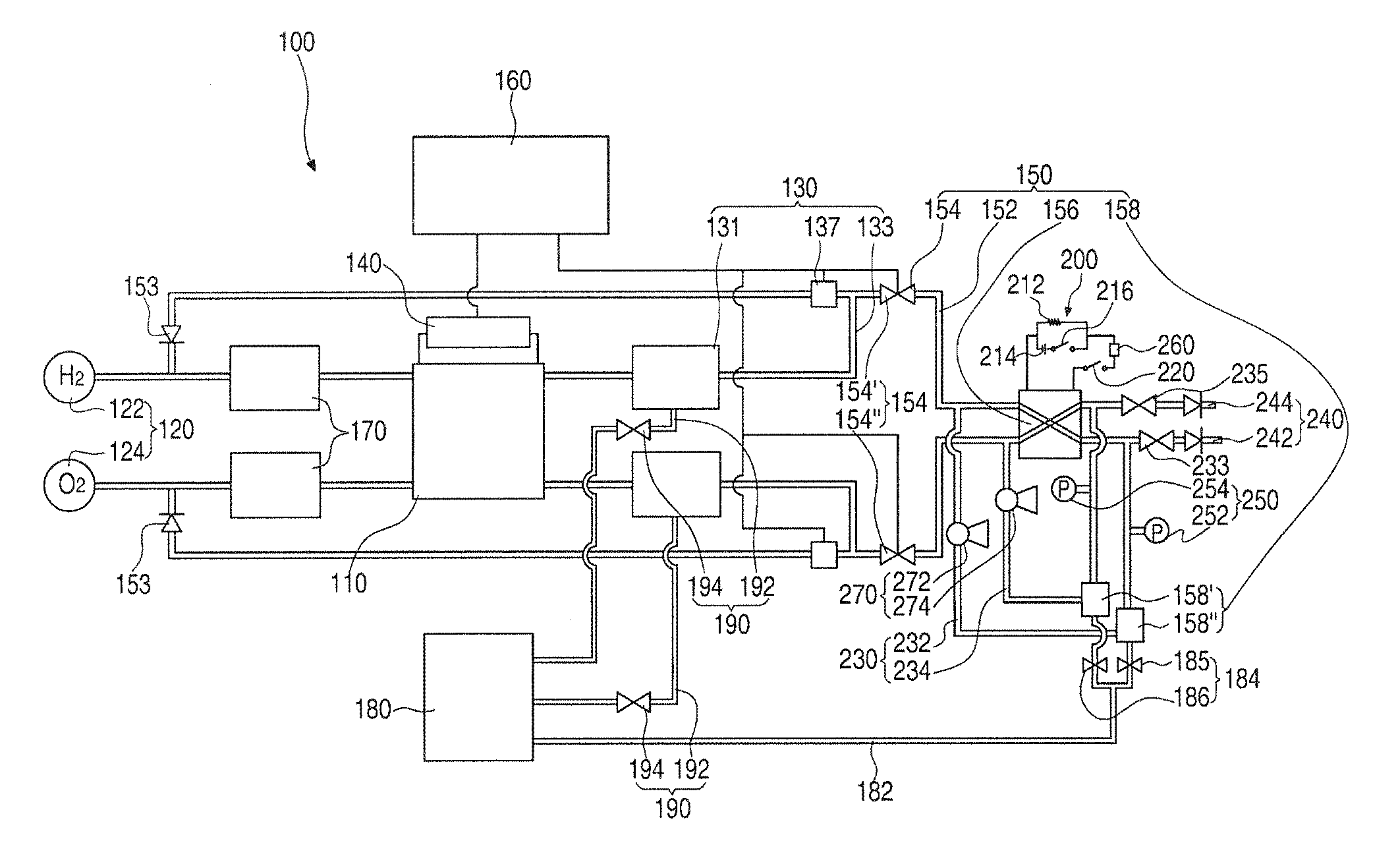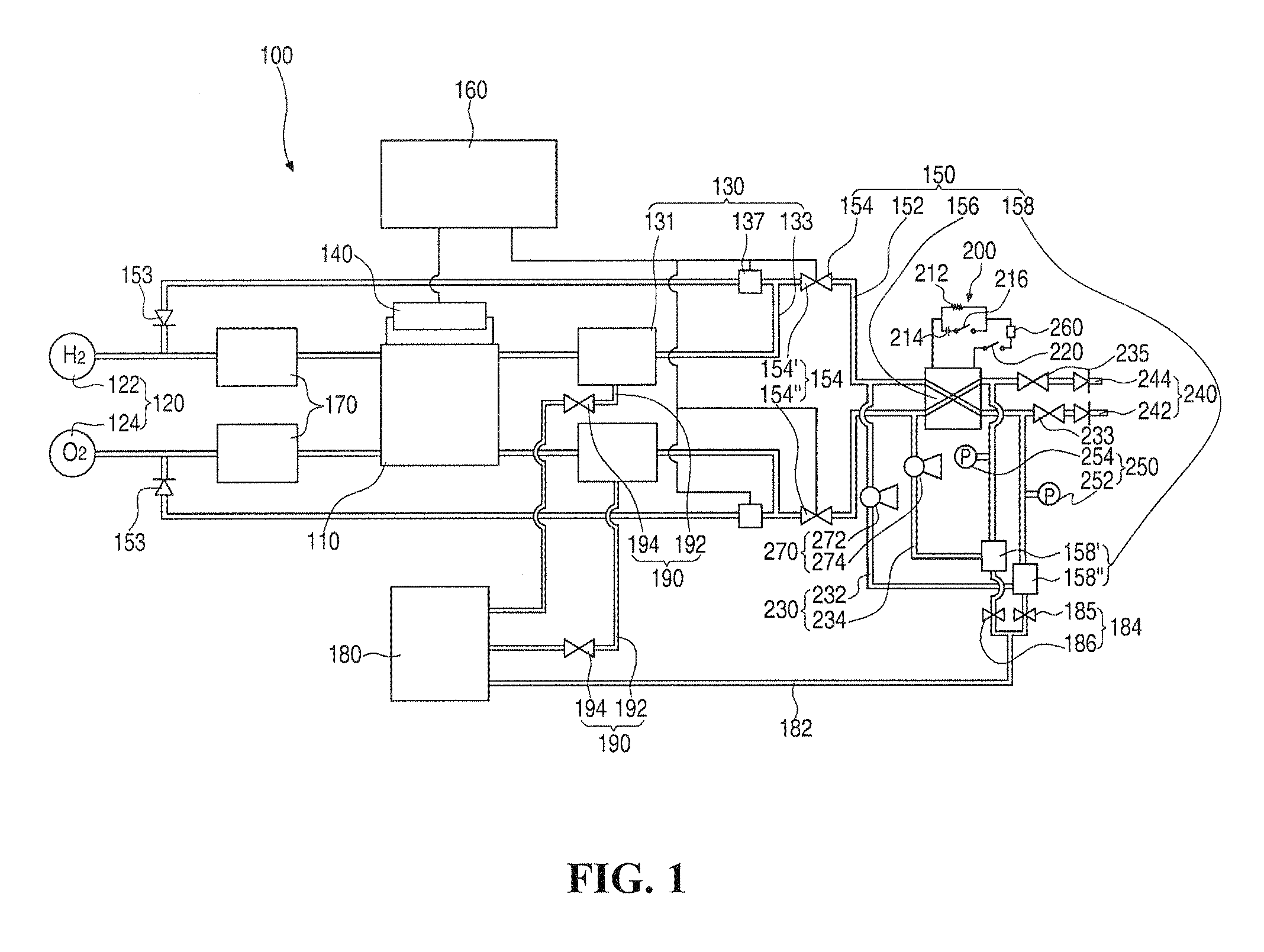Closed loop type fuel cell system with unreacted material removing function
- Summary
- Abstract
- Description
- Claims
- Application Information
AI Technical Summary
Benefits of technology
Problems solved by technology
Method used
Image
Examples
Embodiment Construction
[0095]Hereinafter, a construction of a closed loop type fuel cell system will be described with regard to one embodiment, with reference to the accompanying drawings.
[0096]And, an embodiment of the present invention will be explained by applying oxygen as an oxidant and by using hydrogen as a reductant.
[0097]FIG. 1 shows a diagram showing a construction of a closed loop type fuel cell system according to the present invention.
[0098]As shown in the figure, a closed loop type fuel cell system 100 refers to a system that generates electricity by providing hydrogen (H2) and oxygen (O2) and oxidation-reduction reaction with them, including a main fuel cell 110; a supply means 120 supplying fuel containing hydrogen and oxygen for the main fuel cell 110; a recirculating means 130 recirculating fuel containing hydrogen and oxygen discharged from a main fuel cell 110 back into the main fuel cell 110; a detecting means 140 detecting voltages of a plurality of cells comprising the main fuel ce...
PUM
 Login to View More
Login to View More Abstract
Description
Claims
Application Information
 Login to View More
Login to View More - R&D
- Intellectual Property
- Life Sciences
- Materials
- Tech Scout
- Unparalleled Data Quality
- Higher Quality Content
- 60% Fewer Hallucinations
Browse by: Latest US Patents, China's latest patents, Technical Efficacy Thesaurus, Application Domain, Technology Topic, Popular Technical Reports.
© 2025 PatSnap. All rights reserved.Legal|Privacy policy|Modern Slavery Act Transparency Statement|Sitemap|About US| Contact US: help@patsnap.com



